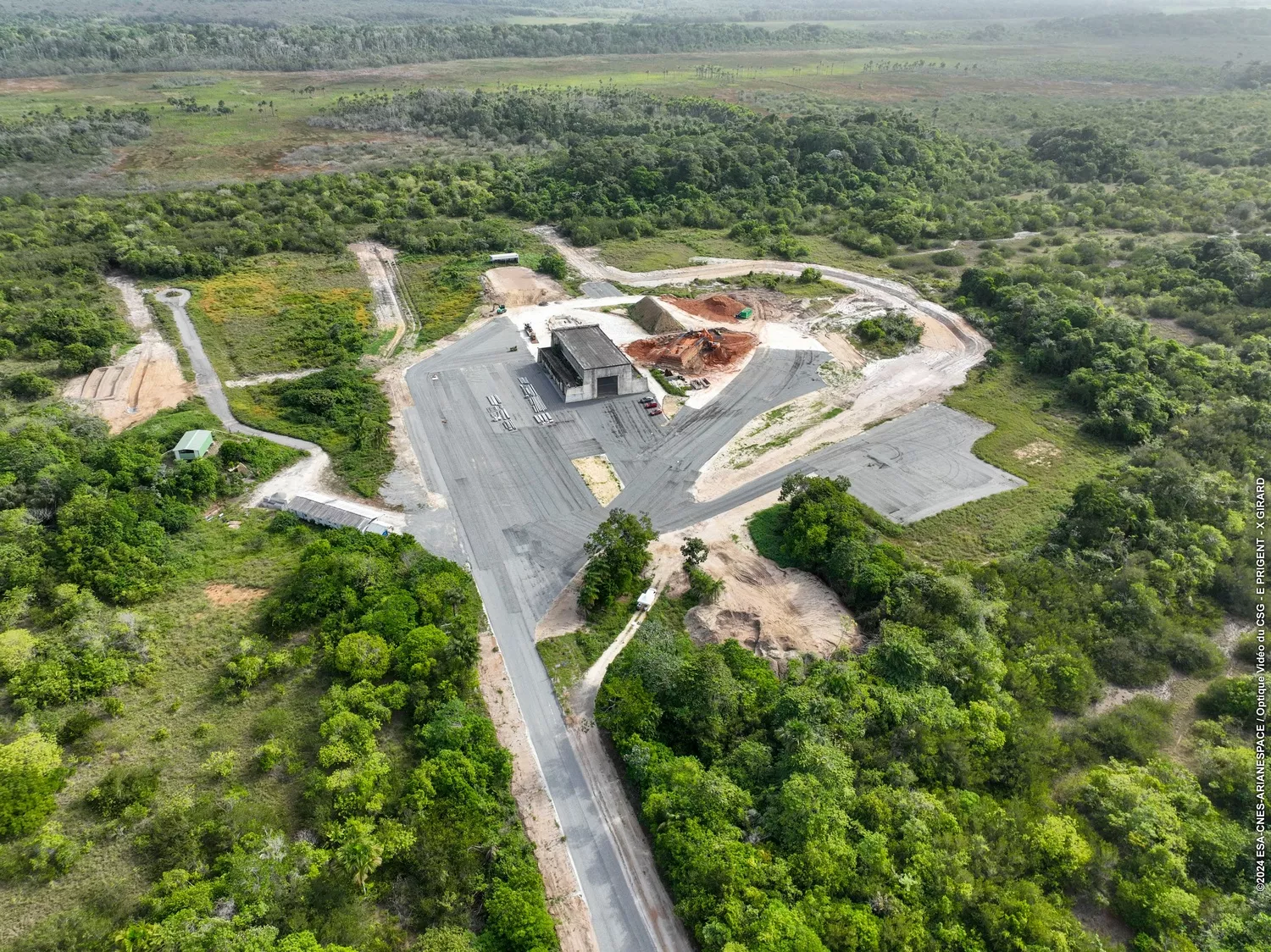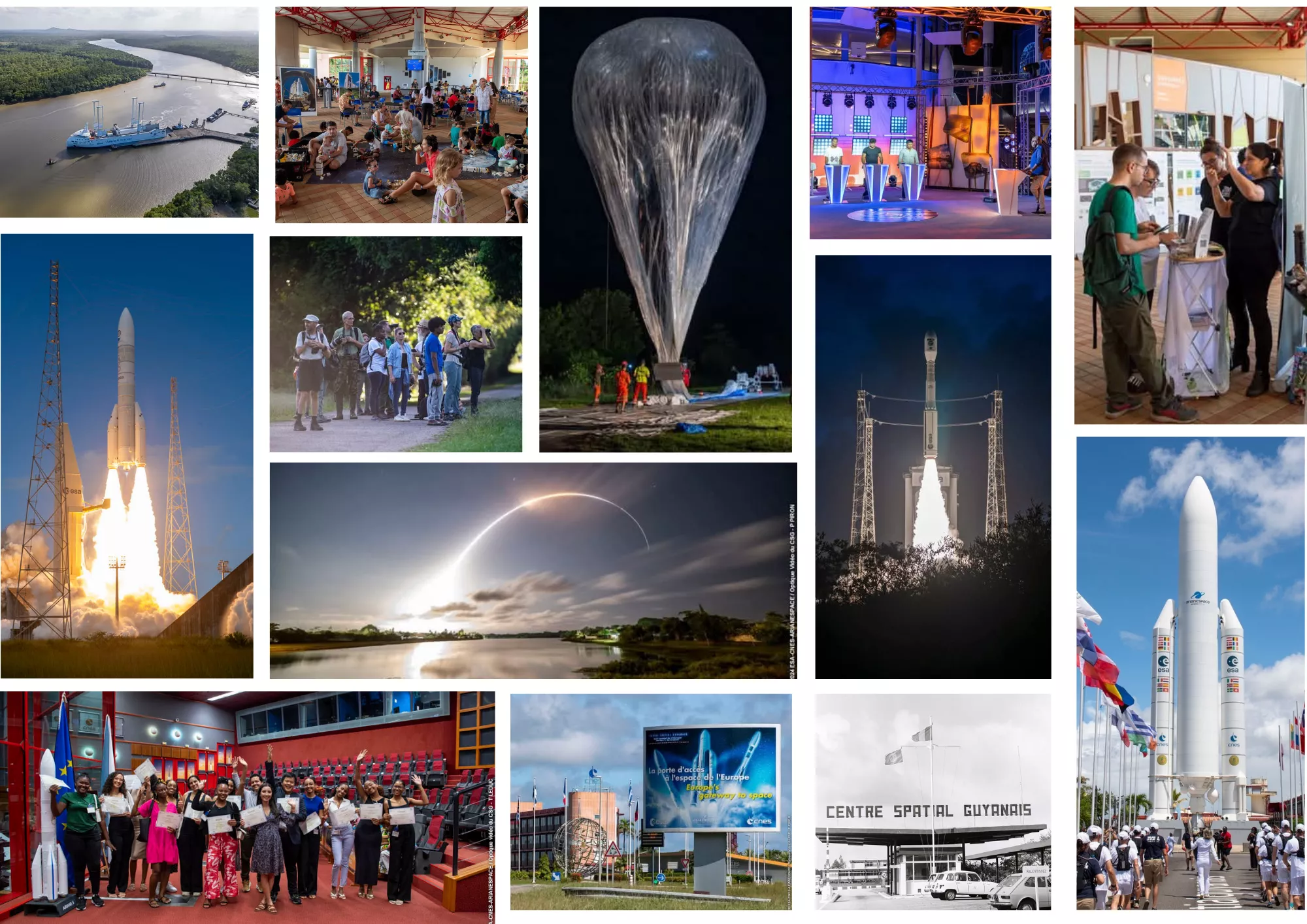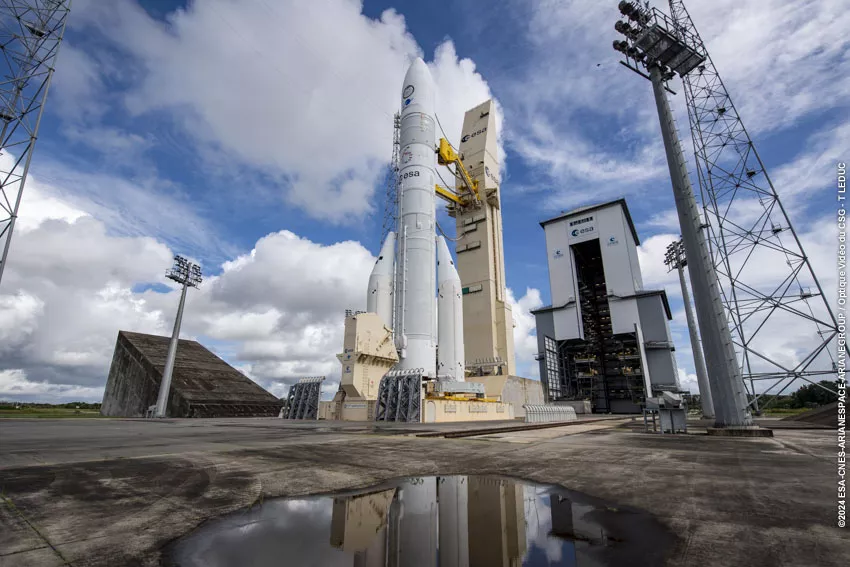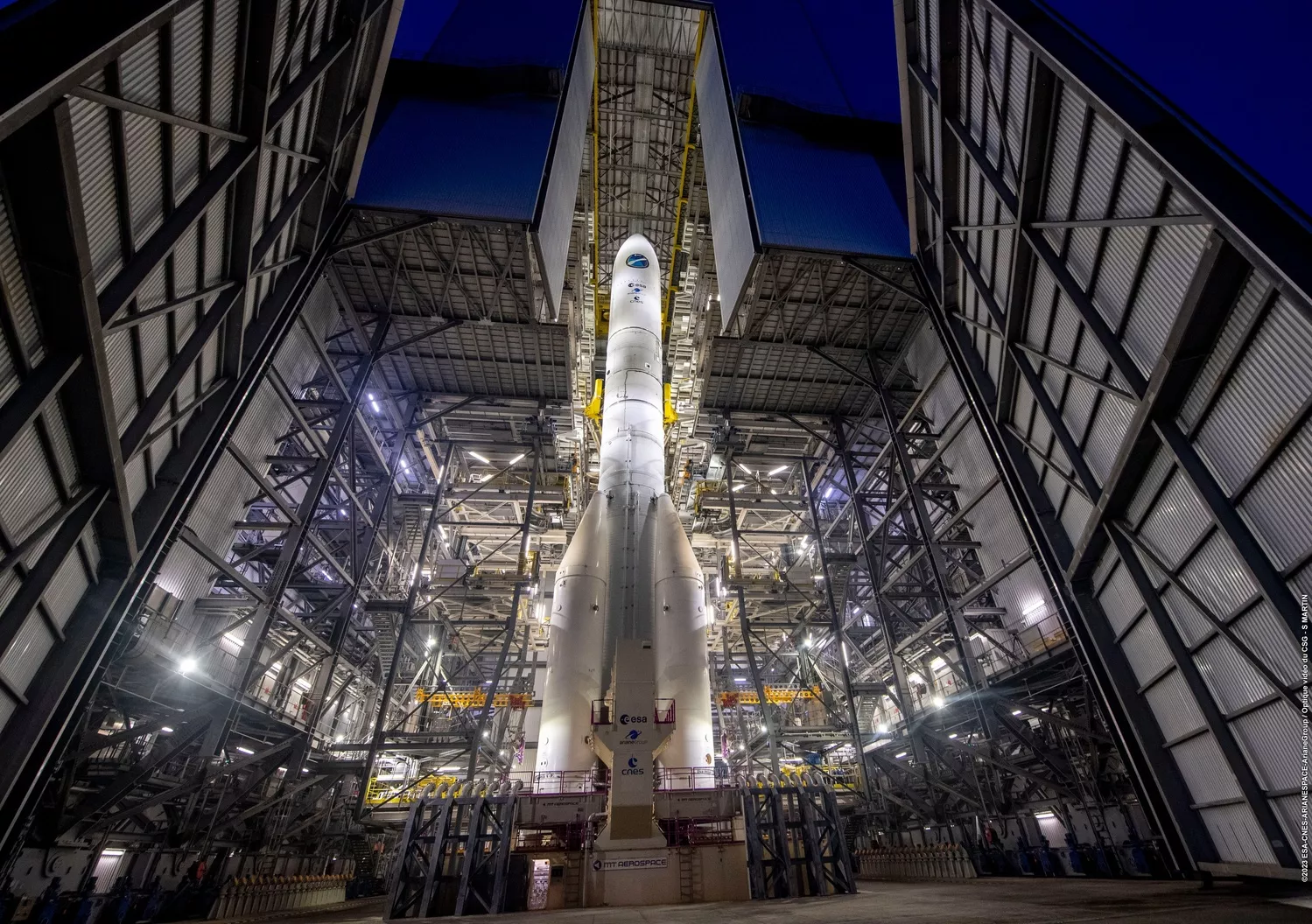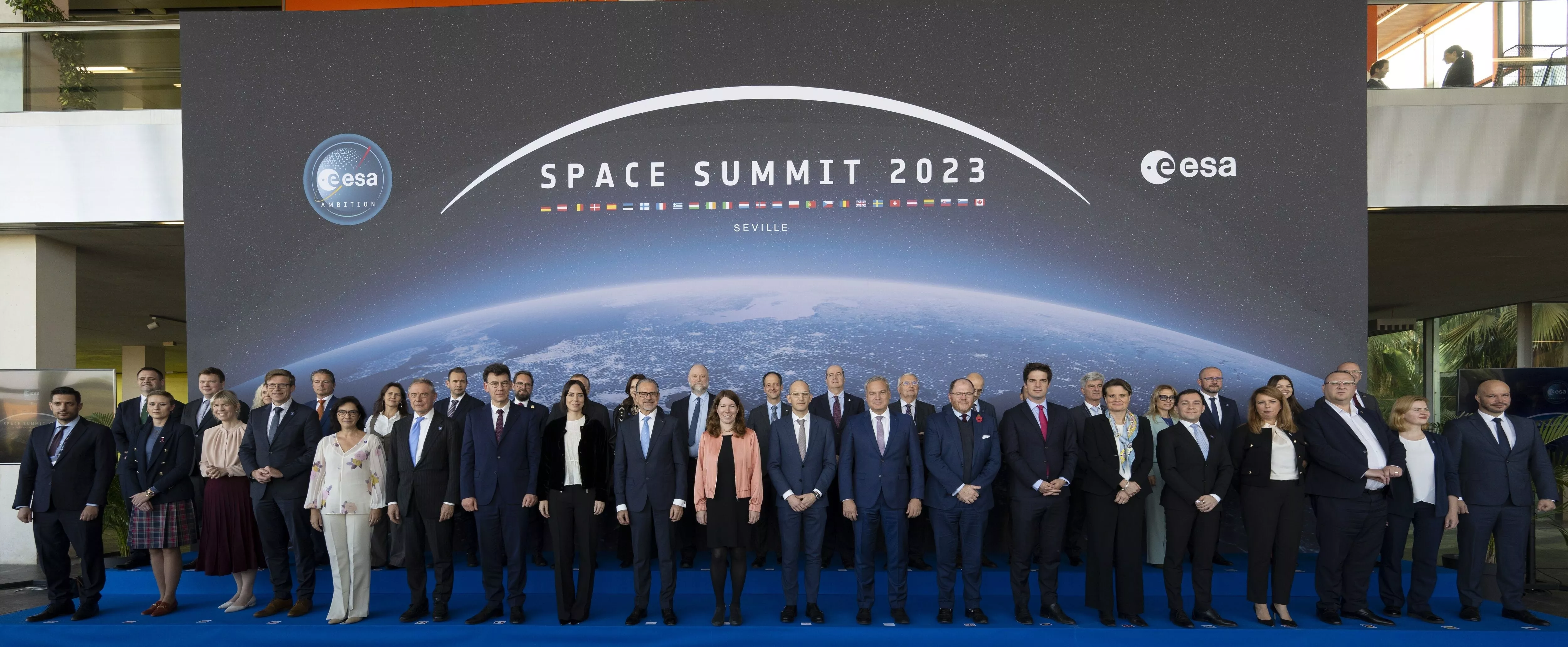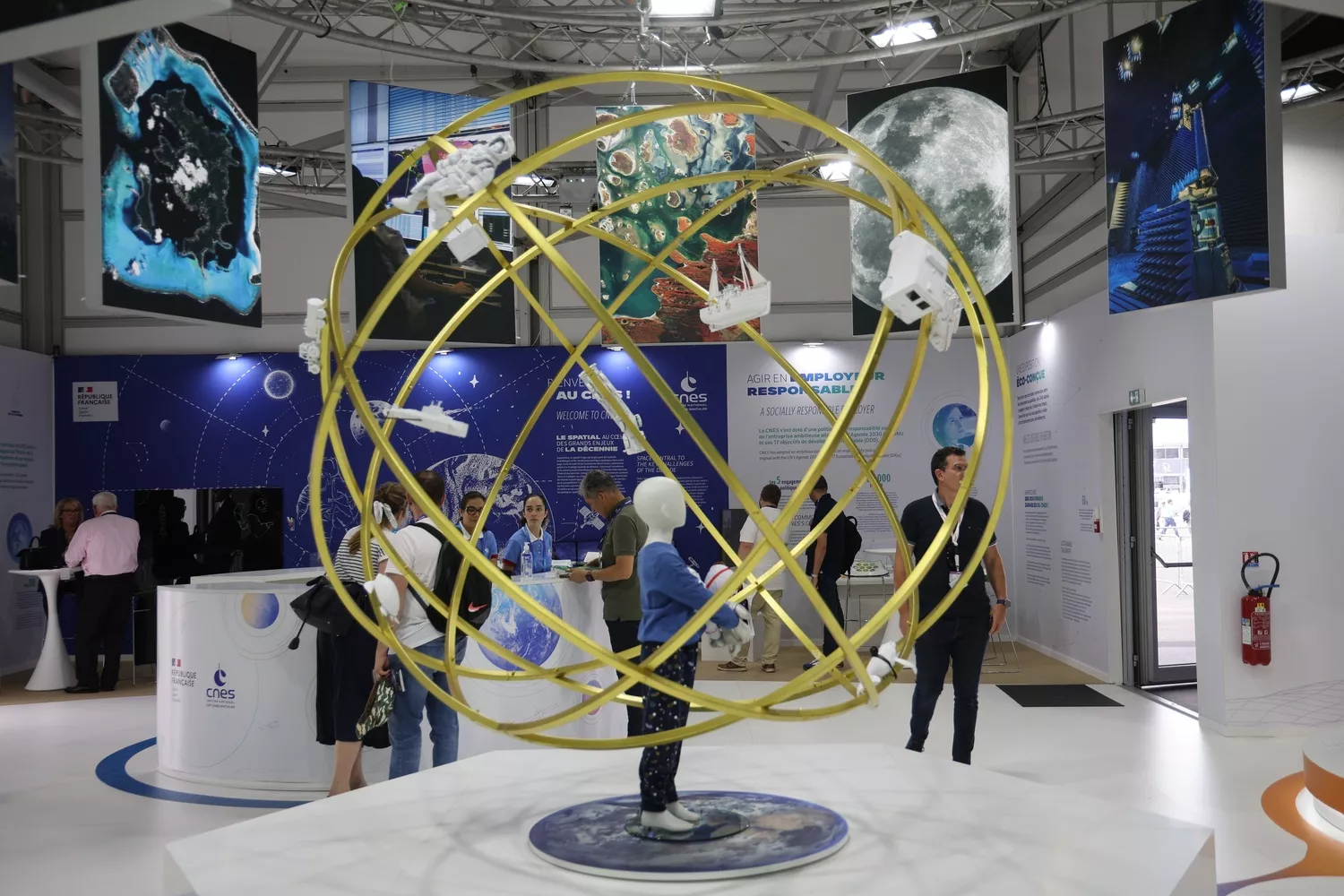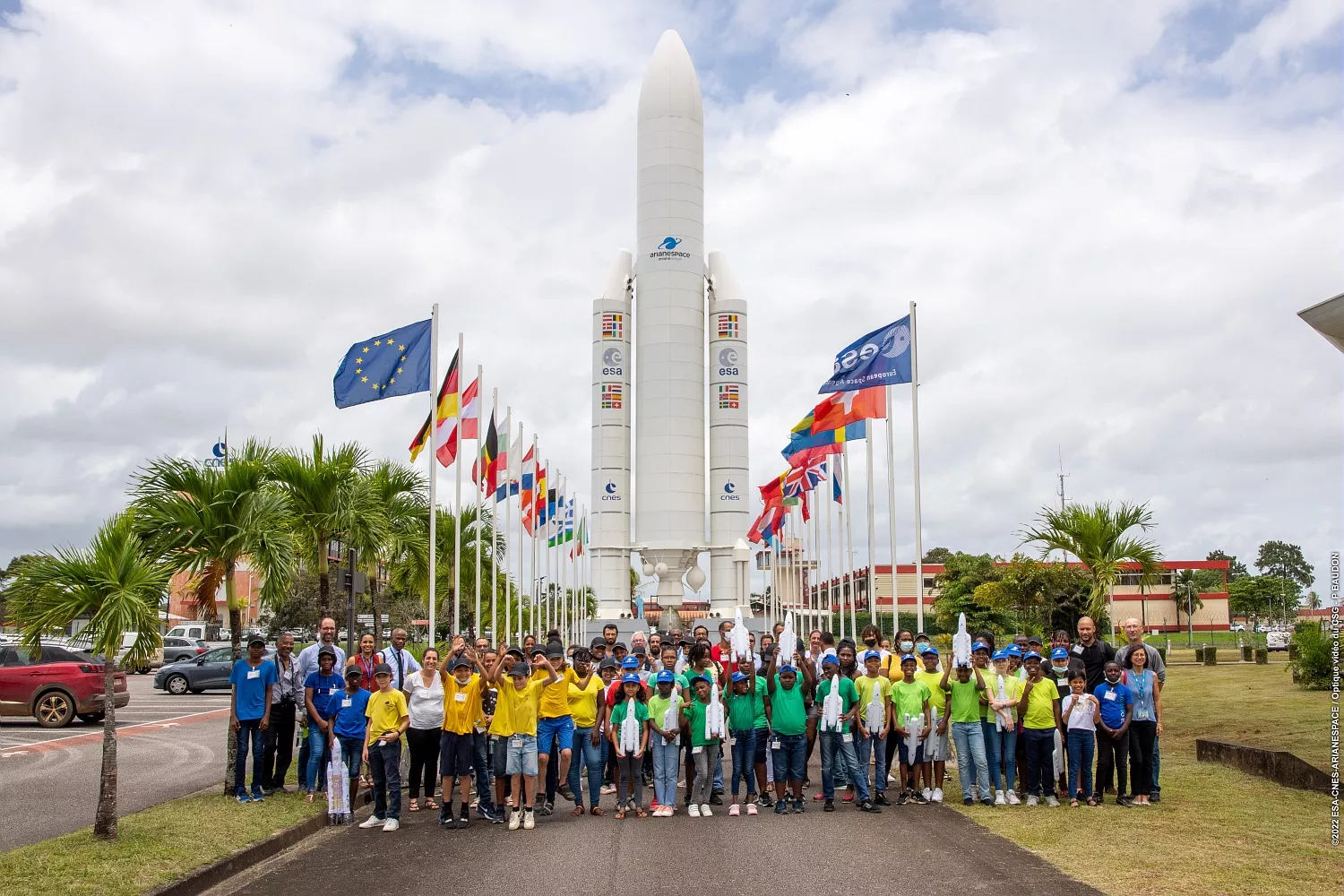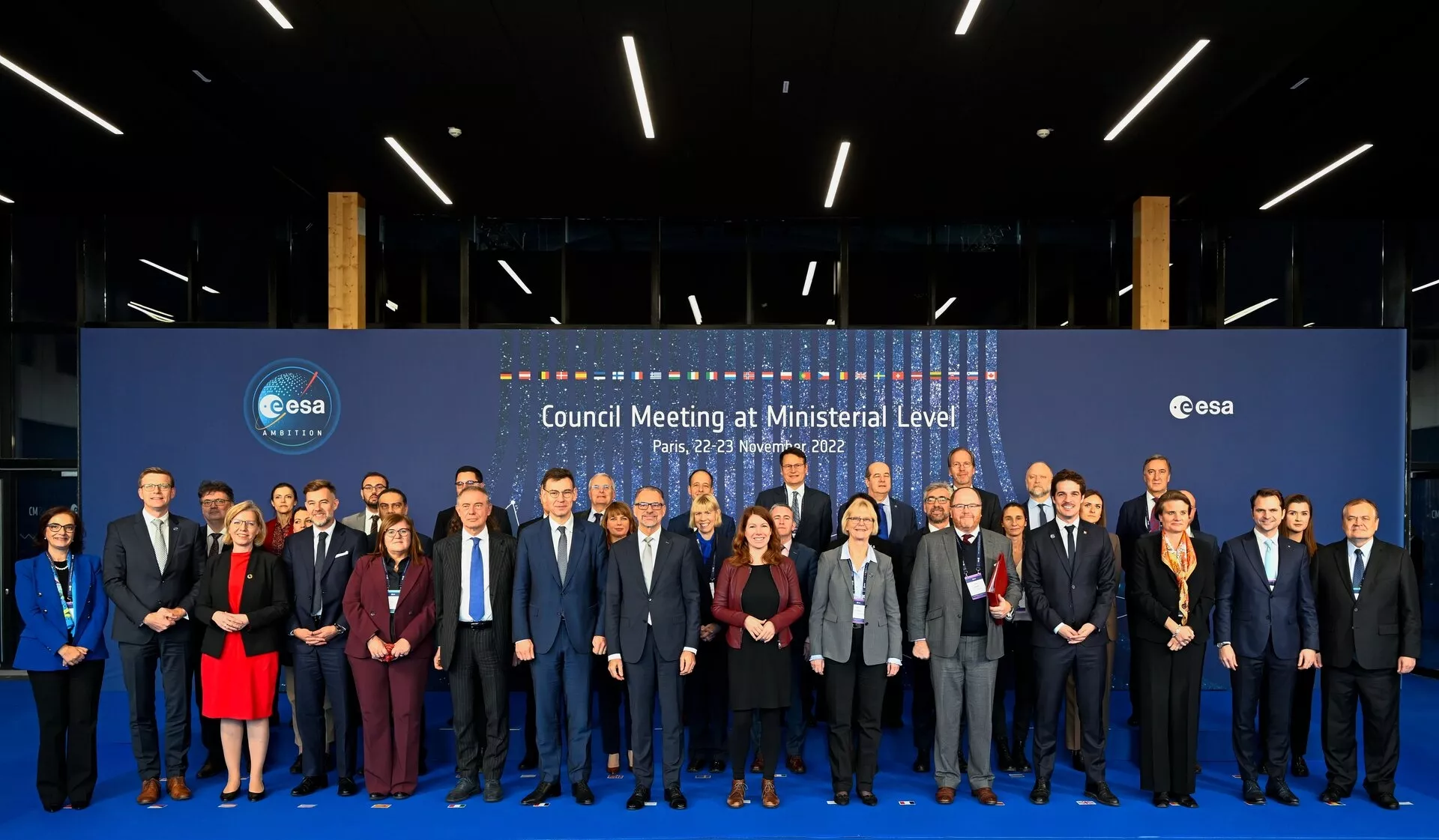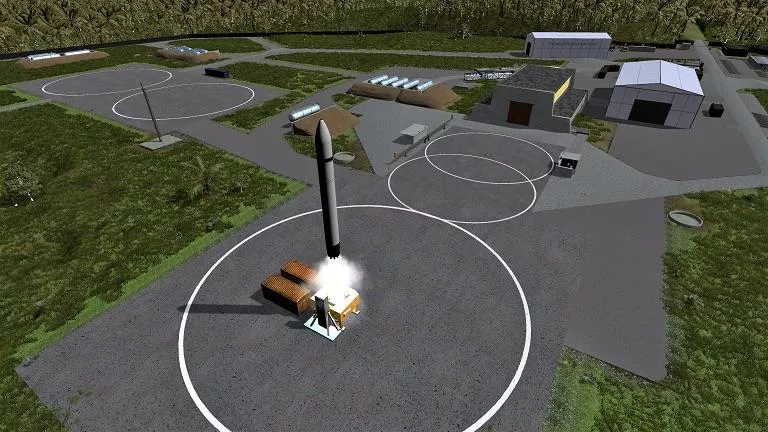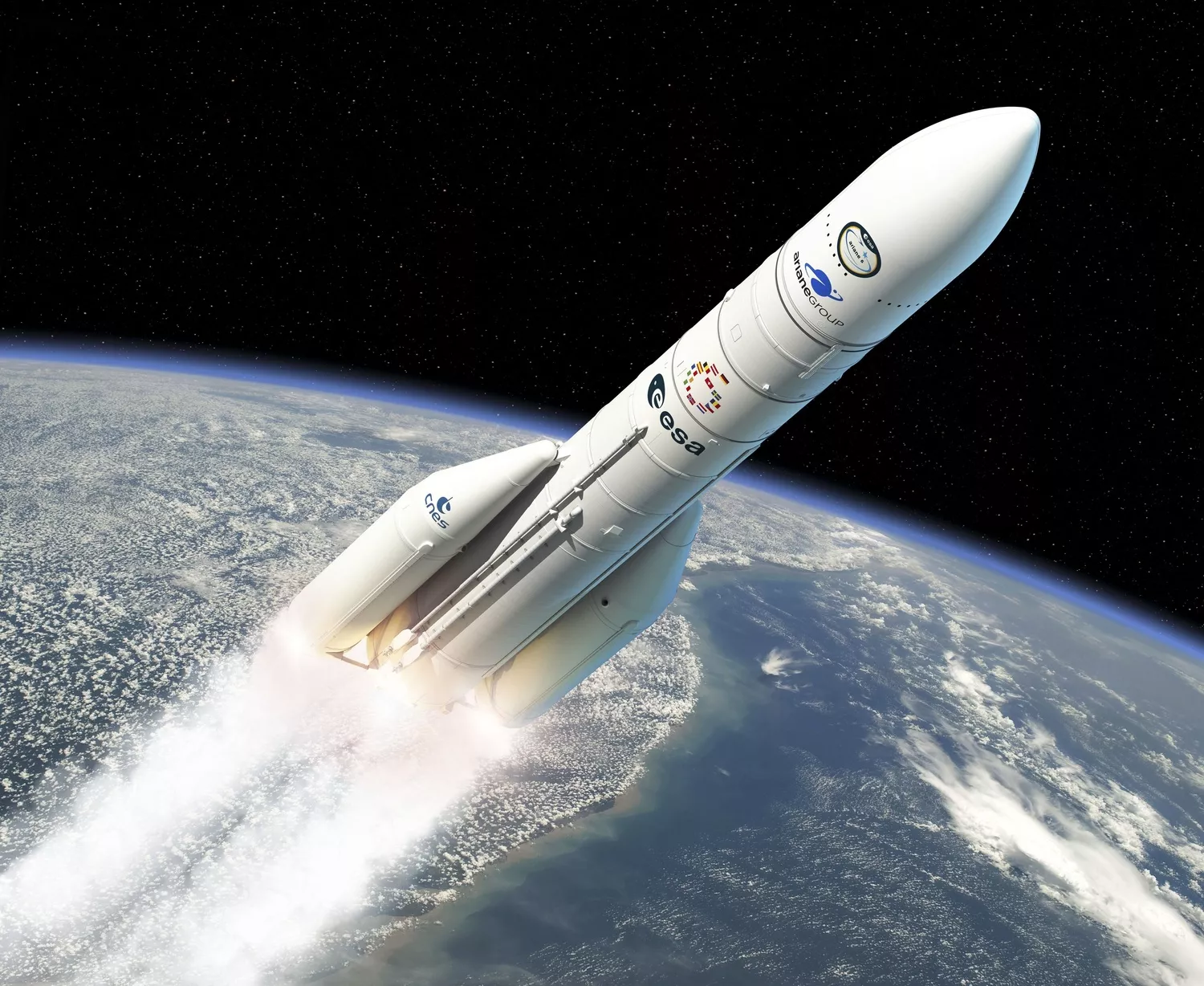Review of 2022 and outlook for 2023
Launches, modernisation of resources, new launch pads and much more: an overview of the space highlights that marked 2022 at Europe’s spaceport, and the outlook for 2023.
Highlights of 2022
"The year 2022 reminded us that the space sector is full of ups and downs." Marie-Anne CLAIR, Director of Europe’s spaceport
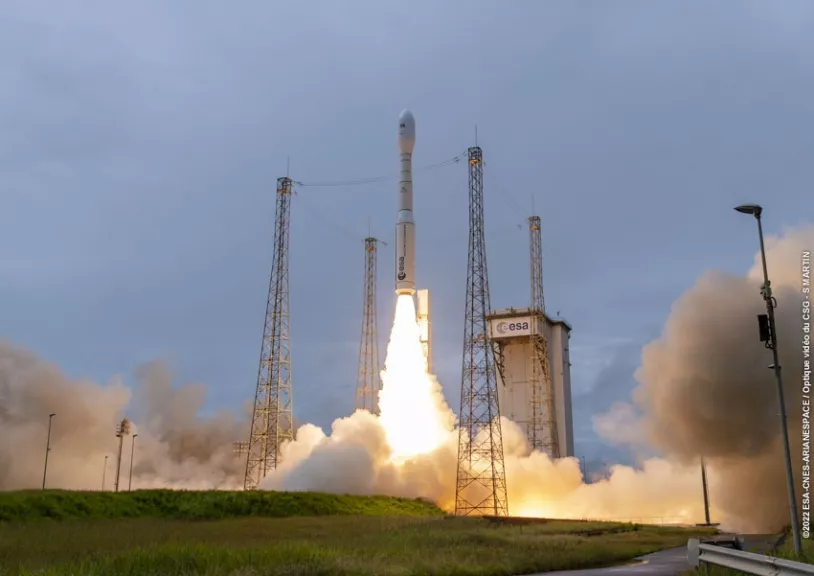
Titre brut
Launches
Europe’s spaceport hosted 6 launches and prepared 49 satellites:
• three Ariane 5 successes: VA257 (MEASAT-3d / GSAT-24), VA258 (Eutelsat Konnect VHTS) and VA259 (Galaxy 35 & 36 / MTG-I1);
• the successful maiden flight of Vega-C: VV21 (LARES-2 / 6 cubesats) and the failure of its first commercial flight: VV22 (Pléiades Neo 5 & 6);
• the success of the last Soyuz flight from Europe's spaceport: VS27 (OneWeb).
For more details, see the launch history.
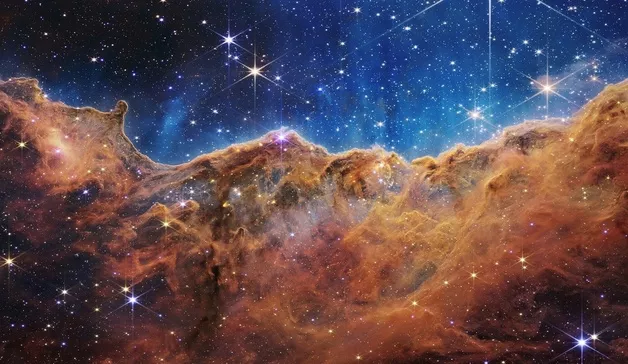
Titre brut
Significant events
- The first images of the Universe captured last July by the James Webb Space Telescope, launched from Europe’s spaceport on 25 December 2021.
- Key stages in the completion of ELA 4 and assembly of the Ariane 6 mock-up.
- Reception of two operators of mini- and micro-launchers, who came to prepare for their arrival at Europe’s spaceport.
- The visit of Thomas Pesquet last June, for a meeting with the general public in Cayenne and Kourou.
- Closure of the Space Museum in October 2022, scheduled to reopen in 2024. Its content will be overhauled to focus on French Guianese, French and European space industry.
Europe’s spaceport also experienced some rather gloomy events, particularly the war in Ukraine, which directly impacted the base by causing the premature shutdown of Soyuz launches at the European Spaceport. Or the failure of the second Vega-C flight at the end of the year, which led to the loss of two Pleiades Neo satellites.
Looking to the future in 2023
A look ahead to the major milestones expected in 2023.
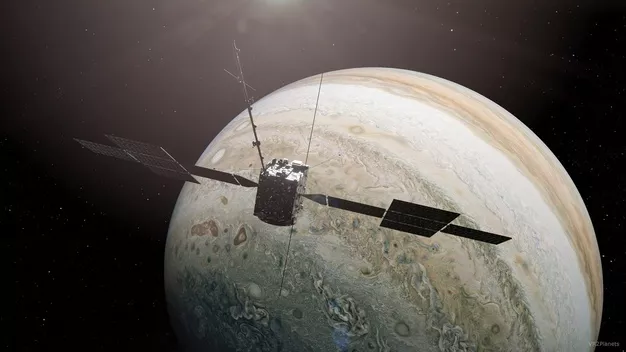
Titre brut
Exceptional launches
The first half of 2023 will witness the last two Ariane 5 launches. They will be used to carry out two iconic missions: Juice, Europe's first probe to Jupiter and Syracuse, France's flagship defence programme.
These two missions will epitomise the 30 years of loyal service provided by this remarkable launcher, as well as the experience acquired by the teams who operate and launch it.
Ariane 6's maiden flight will take place in the last quarter of this year, once the combined tests between the launcher and the ground facilities have validated the smooth operation of the whole system.
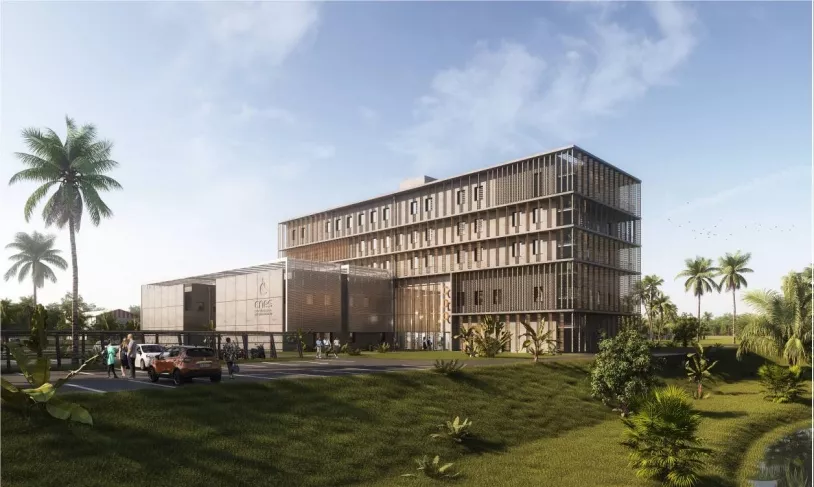
Titre brut
Modernising resources for a more competitive launch site
Last November, during the ESA ministerial meeting, the Member States of the European Space Agency reaffirmed their commitment to making Europe’s spaceport a modern and more competitive European launch site for the European launchers Ariane 6 and Vega-C, as well as for the new stakeholders in the New Space sector.
Following the funding of the Europe’s spaceport-New Generation project in 2019, ESA and France are funding:
- the construction of a new control centre that will allow launches to take place every two days, compared with the current 15 days;
- the launch of digital transformation at Europe’s spaceport, to improve processes, cut down costs and boost productivity;
- renovation of the satellite preparation buildings;
- the construction of solar and biomass power plants, as well as a plant to produce green hydrogen for launchers.
Environment and energy transition
In terms of the environment, the launch site's objective is to operate with at least 90% renewable energy by 2025. Biomass and solar power are the two main avenues chosen to achieve this.
In 2023, Europe’s spaceport will pursue its environmental commitments by further reducing the footprint of its satellite launch activities and facilities. Aware of the impact of rocket launches on the environment, Europe’s spaceport has been constantly improving its knowledge for over 30 years, by imagining and developing new transport systems with less impact.
Europe’s spaceport's commitment to the environment is not limited to the 660 km2 of the base. It covers the entire region by supporting, funding or collaborating on projects and initiatives such as:
- Amazonian Institute for Biodiversity and Sustainable Innovation;
- Flying Whales, a project to use airships to transport heavy loads;
- Hyguane, which will bring green hydrogen to French Guiana for green local mobility.
In the same section
-
Public consultation for mini-launchers
27/02/2025The French Space Agency’s commitments in French Guiana : review and outlook
29/01/2025Europe’s Spaceport: Recap of 2024 and outlook for 2025
28/01/20252024 at Europe’s spaceport
15/01/2024Space Summit: outcomes for Europe’s spaceport
07/11/2023Round table on the modernisation of Europe’s spaceport
22/06/2023CNES's actions in French Guiana: review and outlook
24/02/2023[CMIN 2022] Key announcements of the ESA ministerial meeting
28/11/2022Mini- and micro-launchers: winning operators announced
25/07/2022
